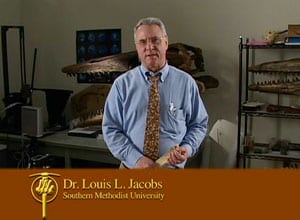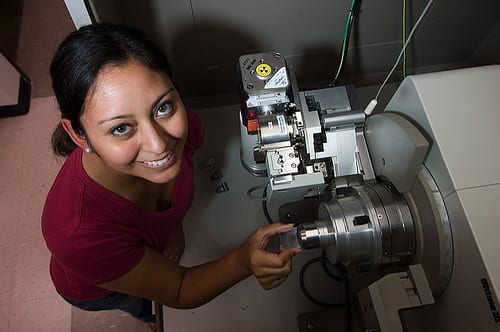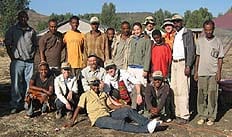The work of SMU researchers Timothy Myers and Anthony Fiorillo was featured online March 19, 2009 on the Discovery Channel. “Mass Dino Graves Suggest Young Banded Together” by Jennifer Viegas highlighted findings being published in the April issue of “Science” magazine.

Lead author Timothy Myers, is a Ph.D. graduate student in SMU’s Roy M. Huffington Department of Earth Sciences in Dedman College.
Co-author Anthony Fiorillo is an adjunct professor in the Huffington Department of Earth Sciences and Curator of Paleontology for the Dallas Museum of Natural History.
Anthony Fiorillo
Excerpt
By Jennifer Viegas
Discovery NewsNew findings on mass dinosaur graves, where several juveniles died together, suggest that young dinosaurs banded together to improve their chances for survival, according to two new studies.
Together, two new studies present three gory ways in which the young dinosaur groups probably met their end: mud traps, droughts and predators.
Paul Sereno, a University of Chicago paleontologist, and his team studied the remains of a herd of more than 25 young, bird-like dinosaurs of the species Sinornithomimus dongi that died together 90 million years ago at what is now the Gobi Desert. …
Researchers Timothy Myers and Anthony Fiorillo of the Huffington Department of Earth Sciences at Southern Methodist University focused their attention on two other juvenile dinosaur fossil sites, which are described in a paper that will be published in next month’s Palaeogeography, Palaeoclimatology, Palaeoecology.
The first, at Mother’s Day Quarry in Montana, contains the remains of several young sauropods that died en masse during the Upper Jurassic. Skin impressions indicate soft tissue was still present when the animals were buried at the site.
“During droughts, modern animals tend to cluster around water sources,” Myers told Discovery News. “The herd of sauropods preserved at the Mother’s Day Quarry may have done the same.”
He and Fiorillo also studied the remains of three juvenile Alamosaurus sanjuanensis at the Upper Cretaceous site Big Bend in Texas. The minimally weathered bones suggest the young sauropods died together in a single event.
“Given their proximity to a lake shore, it’s possible that they succumbed to drought as well,” Myers said.
Related links:
Anthony Fiorillo faculty site
Anthony Fiorillo web site
Abstract: Evidence for gregarious behavior, age segregation in sauropod dinosaurs
SMU Roy M. Huffington Department of Earth Sciences
Dedman College of Humanities and Sciences
 The video features many other respected paleontologists from around the world, all of them talking about the work they do and its importance to science and society. The goal of the video is to educate students, teachers and the public about vertebrate paleontologists and the importance of their work.
The video features many other respected paleontologists from around the world, all of them talking about the work they do and its importance to science and society. The goal of the video is to educate students, teachers and the public about vertebrate paleontologists and the importance of their work.
 A team of researchers led by paleobotanist
A team of researchers led by paleobotanist 